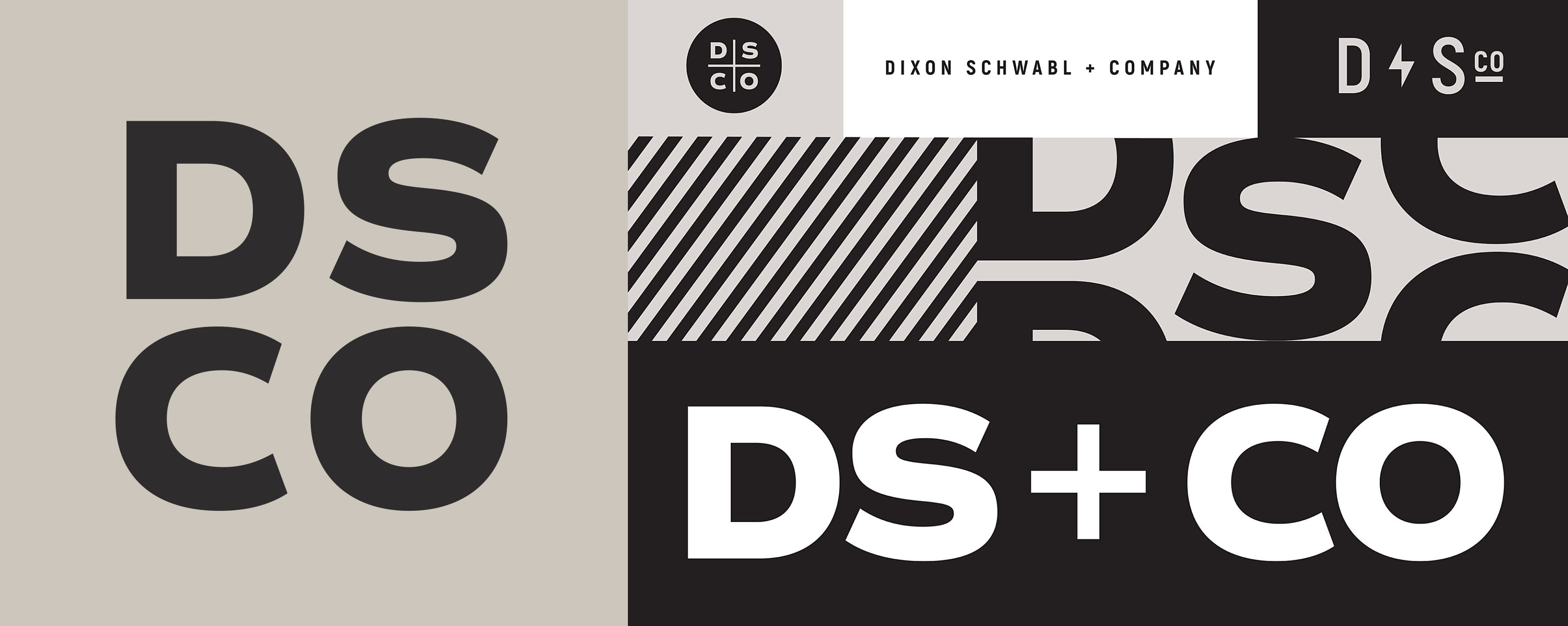Blog
Marketing

Digital marketing trends for 2022
If 2020 and 2021 have taught us anything, it’s the importance of adapting to change and rolling with the unexpected. The uncertainty and unsettled nature of our world will continue into 2022, and as we think about key marketing trends for 2022, let’s start with that notion of fluidity:
1. Fluid Brand: These days, it’s not good enough for marketing to drive results. It needs to drive change–to impact your organization and, ideally, our society. One-third of B2C marketers find social responsibility to be an effective marketing trend, while 45% of marketers plan to increase their investment in social responsibility in 2022. But how do you support society when society is always evolving? By embracing a fluid brand. Coca-Cola did it. Chanel did it. And in 2021, the team here at DS+CO did it, as well.
Your brand needs to be fluid to adapt to this constant change, and a great place to start is your logo. It needs to “shape-shift” depending on the medium and platform where you’re sharing content with your audience. This is why our new logo at DS+CO was made to take many different forms across many different channels.

2. Zero-Party Data: The stronger your brand, the more you connect you’ll be with your audiences at the right place and right time—and the more familiar you will be with your first-party data. As we’ve stated in this marketing trends blog on an annual basis, first-party data (the data set by you) is more important than ever before, with Google soon saying goodbye to third-party cookies (data obtained or purchased from sites and sources that aren’t your own). But what about zero-party data? For those new to the term, zero-party data is information a customer directly shares with your brand. Examples include opting into certain elements of your preference center (e.g., webinar series or a financial industry newsletter), purchase intentions, and how the person wants your brand to recognize and connect with them.
Fatemeh Khatibloo, VP principal analyst at Forrester, says zero-party data “is gold.”
“When a customer trusts a brand enough to provide this really meaningful data, it means that the brand doesn’t have to go off and infer what the customer wants or what [their] intentions are.”
3. Data Science: Does your marketing team have a data scientist? (Or more than one?) If not, it’s time to consider growing your team. Why? Because data scientists can build models that analyze how your marketing spend is driving return on investment—models that recommend how to distribute your budget across locations, channels and campaigns to align with key performance metrics.
The top value is in the predictive element of the models they build so it’s not just sharing results—it’s using the history of your campaigns, environmental factors, audience and more to inform future recommendations. Data scientists can also build models that estimate the lifetime value of each customer based on their purchase history and brand engagement. With this foundation, you can better segment your audiences and know when they want to be connected to and with what content, without having to manually come up with the recommendations on our own. Trust the model, test the recommendation, learn and grow.
The average marketer will be working with about 15 different data sources in 2022 (Salesforce State of Marketing 2021 Report). So yes, you need a team dedicated to data.
4. Trust Tech: There are a number of different ways you can trust technology. For starters, consider the following:
- Dynamic creative for Facebook ads: You supply Facebook with four or five images, headlines and ad copy. From there, Facebook automatically generates the best mix of images, headlines and copy to drive performance for your campaign.
- Automated search campaigns: Not sure if search campaigns are a worth investment? Look no further than Nespresso. Just before the pandemic, the coffee machine and accessory brand embarked on automating 130 actively managed search campaigns into 20 fully automated campaigns. When the pandemic hit, coffee shops and retail stores closed in Germany, changing search queries. Nespresso’s Google Search campaigns reacted immediately by automatically adjusting bids across keywords and budgets. Customers went to Nespresso’s online store, resulting in purchases increasing 25% year over year.
Check out smart bidding and cross-channel bidding through Google, too. You’ll always need a human element to lead your campaigns, but by trusting technology, you’ll be able to spend more time on insights and improvements over the execution.
5. Delight Your Customers: According to Salesforce’s 2021 State of Marketing Report, 78% of marketing organizations have changed or reprioritized metrics due to the pandemic. When you look at where the biggest growth rates are for what marketers are now measuring, they’re all focused on the customer.
- 29% growth rate in marketers measuring customer referral rates/volume (68% of marketers overall)
- 26% growth rate in customer acquisition cost (73% overall)
- 22% growth rate in customer satisfaction analytics (75% overall)
How can you delight your customers? By building a welcome series for new adopters, where you leverage your marketing automation engine to welcome them with a series of three or four drip emails. Look at what content they’re engaging with. Conduct surveys to better understand their interests. Deliver new content personalized to them. Your customers are your biggest growth opportunity—delight them.
6. Consider the Bigger Picture: Delighting your customers can help them remain loyal, but how do you earn the loyalty of prospective customers? How do you apply this to an entire industry?
Marketo defines account-based marketing (ABM) as “a strategy that employs personalized campaigns designed to resonate with a defined set of target accounts in a highly coordinated fashion.” And according to HubSpot, 70% of marketers report using ABM, up 15% from 2020. To succeed in ABM, you need to:
- Start small: Focus on less than 50 accounts to start so you can test and learn to apply across a larger number.
- Focus by vertical: Identify target accounts among a specific vertical you excel in, and deliver thought leadership to those accounts to nurture customers to grow with you and to attract new business in.
- Stock up on content: You’ll need a library of content (at least 8-12 pieces) designed for your target accounts that you can tap into and leverage through a pillar page on your website, email deployment, social media and paid media. Package your content into a monthly industry newsletter and webinar series.
- Leverage marketing automation: Marketing automation software like Marketo or HubSpot makes it easier for your marketing and sales teams to work more efficiently, send personalized content and track your ABM campaign’s impact on revenue won.
- Paid media: Without paid media, it’s hard for the non-customer accounts you’re targeting to learn who you are and why they should do business with you.
- Measurement plan: Develop a measurement plan to align campaign success with your goals. Example key performance indicators include revenue won, account lead scoring, number of accounts engaging with content (web traffic, asset downloads, form fills) and paid media’s impact on driving new accounts into the program.
7. Influencer Marketing: In our December webinar, we talked with the PGA TOUR, the team behind the PGA TOUR’s RBC Heritage and Slate about the growth of TikTok, specifically among the 18 to 29-year-old age group. Is TikTok right for you? If so, how do you use it? Why is it so different from other social media platforms, and what are other social media platforms copying from it?
- TikTok’s popularity is connected in part to the growth of influencer marketing, which is estimated to reach $15 billion by 2022. The way to succeed in this arena is to target micro-influencers who have a very defined audience that aligns with your brand’s mission (think foodie for a restaurant, travel influencer for tourism) and holding them accountable to metrics that impact business growth. So it’s beyond the likes and shares—it's impact on web traffic and use of coupon codes.
8. Meta: The prefix “meta” means beyond, after or across. With Facebook rebranding to Meta, the company is no longer going to be Facebook first, choosing instead to focus on building virtual-reality products. As Mark Zuckerberg says, “Beyond the constraints of screens, beyond the limits of distance and physics and towards a future where everyone can be present with each other, create new opportunities and experience new things.”
But as we start 2022, the most important lesson for marketers to remember—the learning that ties these all together—is to pay attention to your customers. They’re changing every day, and brands must learn to change alongside them while also remaining true to their core convictions, which should reflect those of your customers in the first place. Customers can spot inauthenticity from a mile away, so if you don’t care enough to provide a genuine, human experience, why should they care about your brand?
Be more present with your audience and each other, whether that’s virtually or in person. Drop the second-screen distraction. Take a break from multitasking and take time to engage. Even with all of these emerging trends and the digital world, it’s important to be present in and enjoy the moment.

Jon Alhart
Jon unites people and resources, piecing together the full marketing puzzle to drive impact in emerging digital spaces. He’s a graduate of Ithaca College and is certified in Advanced Google Analytics, HubSpot Inbound Marketing, Google Ads Search and Marketo. And he wraps all of that in 20+ years of nonprofit, sports, events, financial services, healthcare, retail and telecom experience. Including giving his time to Baden Street Settlement.